Sustainable Corn Stubble Management Is Site Specific: A Study in Northeastern China
Abstract
:1. Introduction
2. Material and Methods
2.1. Policy Background
2.2. Study Sites
2.3. Experimental Design
2.4. Soil Sampling
2.5. Statistical Analysis
3. Results and Discussion
3.1. AAT and APP of the Three Experimental Sites
3.2. Soil Nutrients and SOM
3.3. The Influence of AAT and APP
4. Conclusions
Author Contributions
Funding
Institutional Review Board Statement
Informed Consent Statement
Data Availability Statement
Conflicts of Interest
References
- Shen, Z.; Wang, S.; Boussemart, J.-P.; Hao, Y. Digital transition and green growth in Chinese agriculture. Technol. Forecast. Soc. Change 2022, 181, 121742. [Google Scholar] [CrossRef]
- Laurent, A.; Cleveringa, A.; Fey, S.; Kyveryga, P.; Wiese, N.; Lefebvre, M.; Newville, D.; Quinn, D.; McGuire, J.; Tao, H.; et al. Late-season corn stalk nitrate measurements across the US Midwest from 2006 to 2018. Sci. Data 2023, 10, 192. [Google Scholar] [CrossRef] [PubMed]
- Reicosky, D.C. Conservation Agriculture: Global Environmental Benefits of Soil Carbon Management; Springer: Dordrecht, The Netherlands, 2003; pp. 3–12. [Google Scholar]
- Knowler, D.; Bradshaw, B. Farmers’ adoption of conservation agriculture: A review and synthesis of recent research. Food Policy 2007, 32, 25–48. [Google Scholar] [CrossRef]
- Atreya, K.; Sharma, S.; Bajracharya, R.M.; Rajbhandari, N.P. Applications of reduced tillage in hills of central Nepal. Soil Tillage Res. 2006, 88, 16–29. [Google Scholar] [CrossRef]
- Kong, L. Maize residues, soil quality, and wheat growth in China. A review. Agron. Sustain. Dev. 2014, 34, 405–416. [Google Scholar] [CrossRef]
- Chivenge, P.P.; Murwira, H.K.; Giller, K.E.; Mapfumo, P.; Six, J. Long-term impact of reduced tillage and residue management on soil carbon stabilization: Implications for conservation agriculture on contrasting soils. Soil Tillage Res. 2007, 94, 328–337. [Google Scholar] [CrossRef]
- Turmel, M.-S.; Speratti, A.; Baudron, F.; Verhulst, N.; Govaerts, B. Crop residue management and soil health: A systems analysis. Agric. Syst. 2015, 134, 6–16. [Google Scholar] [CrossRef]
- Nyakudya, I.W.; Stroosnijder, L. Conservation tillage of rainfed maize in semi-arid Zimbabwe: A review. Soil Tillage Res. 2015, 145, 184–197. [Google Scholar] [CrossRef]
- El-Sharkawy, M.; El-Naggar, A.H.; Al-Huqail, A.A.; Ghoneim, A.M. Acid-Modified Biochar Impacts on Soil Properties and Biochemical Characteristics of Crops Grown in Saline-Sodic Soils. Sustainability 2022, 14, 8190. [Google Scholar] [CrossRef]
- Zhang, E.; Wang, M.; Pan, X.; Wang, X. Establishment of a Highly Efficient Corn Stock-Degrading Microbial Consortium and Its Degradation Effect. Adv. Agric. 2022, 2022, 8034553. [Google Scholar] [CrossRef]
- Jia, H.; Wang, G.; Guo, L.; Zhuang, J.; Tang, L. Wind erosion control utilizing standing corn residue in Northeast China. Soil Tillage Res. 2015, 153, 112–119. [Google Scholar] [CrossRef]
- Jia, H.; Ma, C.; Liu, Z.; Wang, Z.; Sun, Y.; Huang, D.; Li, G.; Liu, F. Mechanized Three-Year Rotation Tillage Method for Water Storage and Moisture Preservation of Crops in Ridge Cultivation in Northeast China. ZL 200410011106.8, 23 September 2004. [Google Scholar]
- Jia, H.; Ma, C.; Li, H.; Chen, Z. Tillage soil protection of black soil zone in northeast of China based on analysis of conservation tillage in the United States. Nongye Jixie Xuebao/Trans. Chin. Soc. Agric. Mach. 2010, 41, 28–34. [Google Scholar]
- Du, Z.; Angers, D.A.; Ren, T.; Zhang, Q.; Li, G. The effect of no-till on organic C storage in Chinese soils should not be overemphasized: A meta-analysis. Agric. Ecosyst. Environ. 2017, 236, 1–11. [Google Scholar] [CrossRef]
- Wang, G.; Jia, H.L.; Tang, L.; Lu, Y.L.; Guo, L.; Zhuang, J. Standing corn residue effects on soil frost depth, snow depth and soil heat flux in Northeast China. Soil Tillage Res. 2017, 165, 88–94. [Google Scholar] [CrossRef]
- Gollany, H.T.; Rickman, R.W.; Liang, Y.; Albrecht, S.L.; Machado, S.; Kang, S. Predicting Agricultural Management Influence on Long-Term Soil Organic Carbon Dynamics: Implications for Biofuel Production. Agron. J. 2011, 103, 234–246. [Google Scholar] [CrossRef]
- Bertol, I.; Leite, D.; Zoldan, W.A. Corn crop residue decomposition and related parameters. Rev. Bras. Ciência Solo 2004, 28, 369–375. [Google Scholar] [CrossRef]
- Alvarez, C.R.; Alvarez, R.; Sarquis, A. Residue decomposition and fate of nitrogen-15 in a wheat crop under different previous crops and tillage systems. Commun. Soil Sci. Plant Anal. 2008, 39, 574–586. [Google Scholar] [CrossRef]
- Yang, H.; Dai, F.; Chen, H.; He, Y.; Wang, Z.; Wang, R. Fabrication of stalk fiber/geopolymers-based slow-release fertilizer with agricultural waste and loess for promoting plant growth. J. Environ. Chem. Eng. 2023, 11, 109481. [Google Scholar] [CrossRef]
- Araya, T.; Nyssen, J.; Govaerts, B.; Deckers, J.; Sommer, R.; Bauer, H.; Gebrehiwot, K.; Cornelis, W.M. Seven years resource-conserving agriculture effect on soil quality and crop productivity in the Ethiopian drylands. Soil Tillage Res. 2016, 163, 99–109. [Google Scholar] [CrossRef]
- Ismaili, K.; Ismaili, M.; Ibijbijen, J. The use of C-13 and N-15 based isotopic techniques for assessing soil C and N changes under conservation agriculture. Eur. J. Agron. 2015, 64, 1–7. [Google Scholar] [CrossRef]
- Gentile, R.; Vanlauwe, B.; Chivenge, P.; Six, J. Trade-offs between the short- and long-term effects of residue quality on soil C and N dynamics. Plant Soil 2011, 338, 159–169. [Google Scholar] [CrossRef]
- Burgess, M.S.; Mehuys, G.R.; Madramootoo, C.A. Decomposition of grain-corn residues (Zea mays L.): A litterbag study under three tillage systems. Can. J. Soil Sci. 2002, 82, 127–138. [Google Scholar] [CrossRef]
- Jones, C.; Huang, C.Y.; Wu, C.F. Quantification of the effects of management factors on maize (Zea mays L.) and cotton (Gossypium hirsutum L.) residues decomposition rate. J. Environ. Sci. 2002, 14, 165–172. [Google Scholar]
- Kandeler, E.; Tscherko, D.; Spiegel, H. Long-term monitoring of microbial biomass, N mineralisation and enzyme activities of a Chernozem under different tillage management. Biol. Fertil. Soils 1999, 28, 343–351. [Google Scholar] [CrossRef]
- Deng, J.; Wang, G.; Zhu, Y.; Zhou, D.; Zhou, L.; Yuan, H.; Huang, D.; Jia, H. Conventional tillage combined with residue removal reduces growing-season methane emissions in flooded paddy (Oryza sativa L. subsp. japonica Kato) fields. Eur. J. Agron. 2022, 140, 126612. [Google Scholar] [CrossRef]
- Deng, J.; Deng, Y.; Sun, Z.; Wang, G.; Cao, L.; Yuan, H.; Huang, D.; Jia, H. Tillage and residue management affect growing-season soil respiration in paddy fields. Soil Tillage Res. 2022, 218, 105315. [Google Scholar] [CrossRef]
- Li, C.; Yan, K.; Tang, L.; Jia, Z.; Li, Y. Change in deep soil microbial communities due to long-term fertilization. Soil Biol. Biochem. 2014, 75, 264–272. [Google Scholar] [CrossRef]
- Kauer, K.; Raave, H.; Koster, T.; Viiralt, R.; Noormets, M.; Keres, I.; Laidna, T.; Parol, A.; Selge, A. The decomposition of turfgrass clippings is fast at high air humidity and moderate temperature. Acta Agric. Scand. Sect. B-Soil Plant Sci. 2012, 62, 224–234. [Google Scholar] [CrossRef]
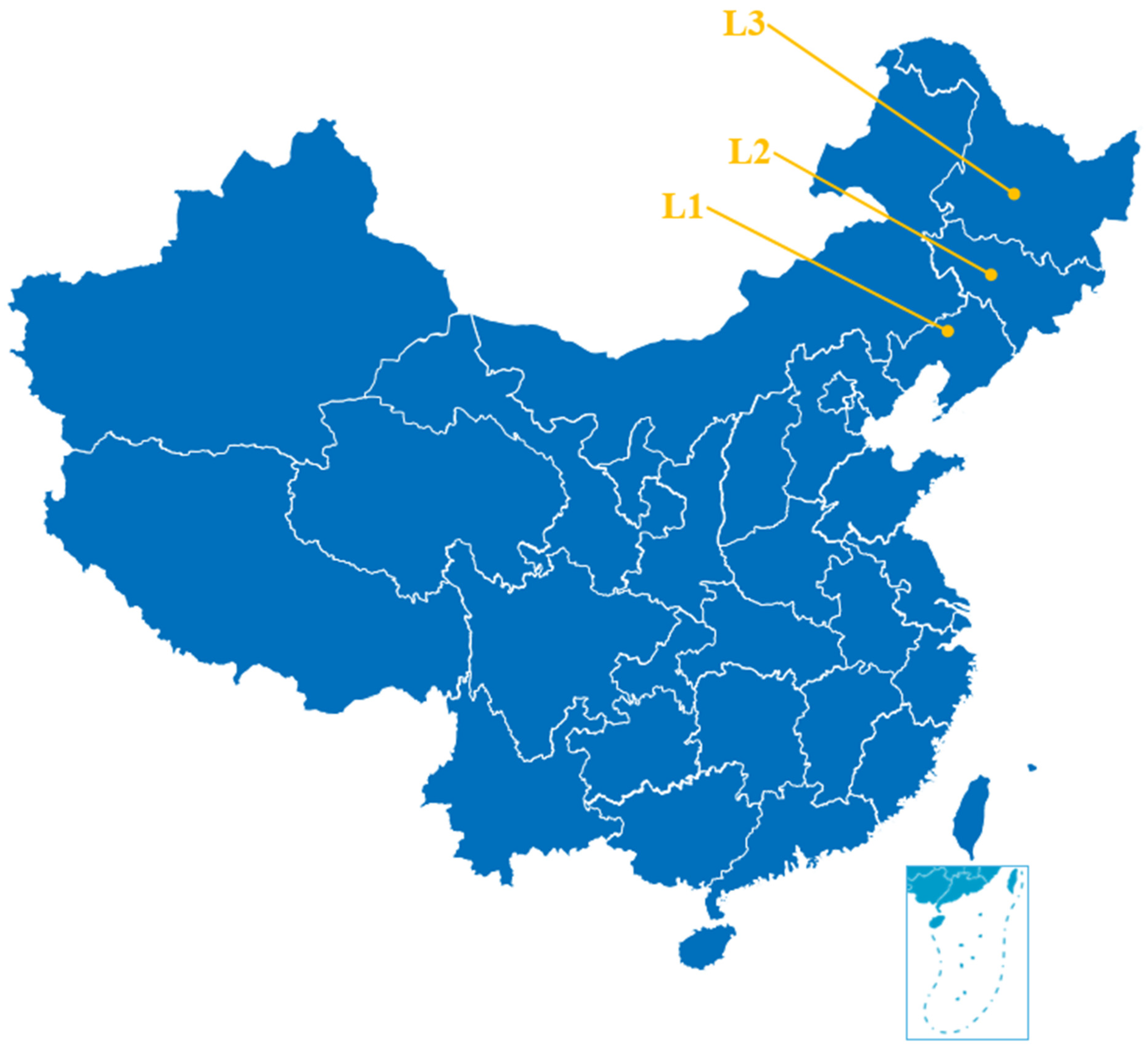
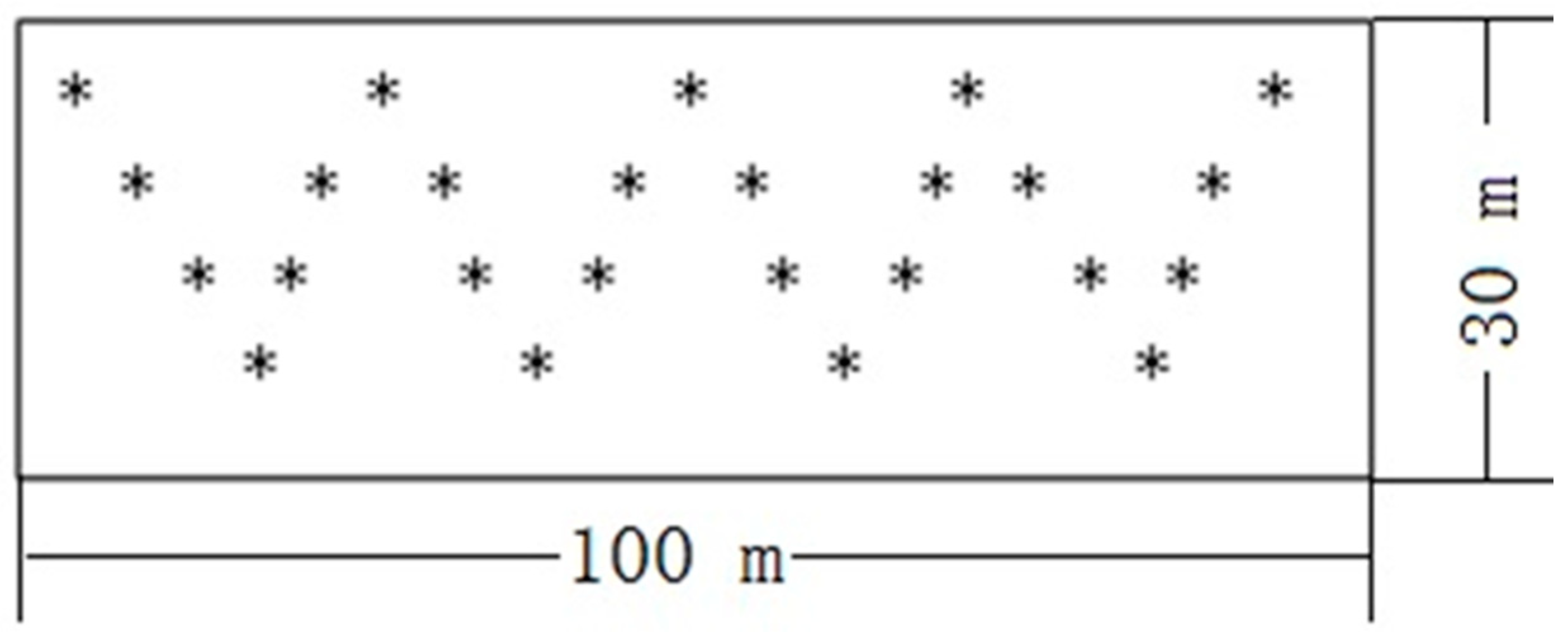


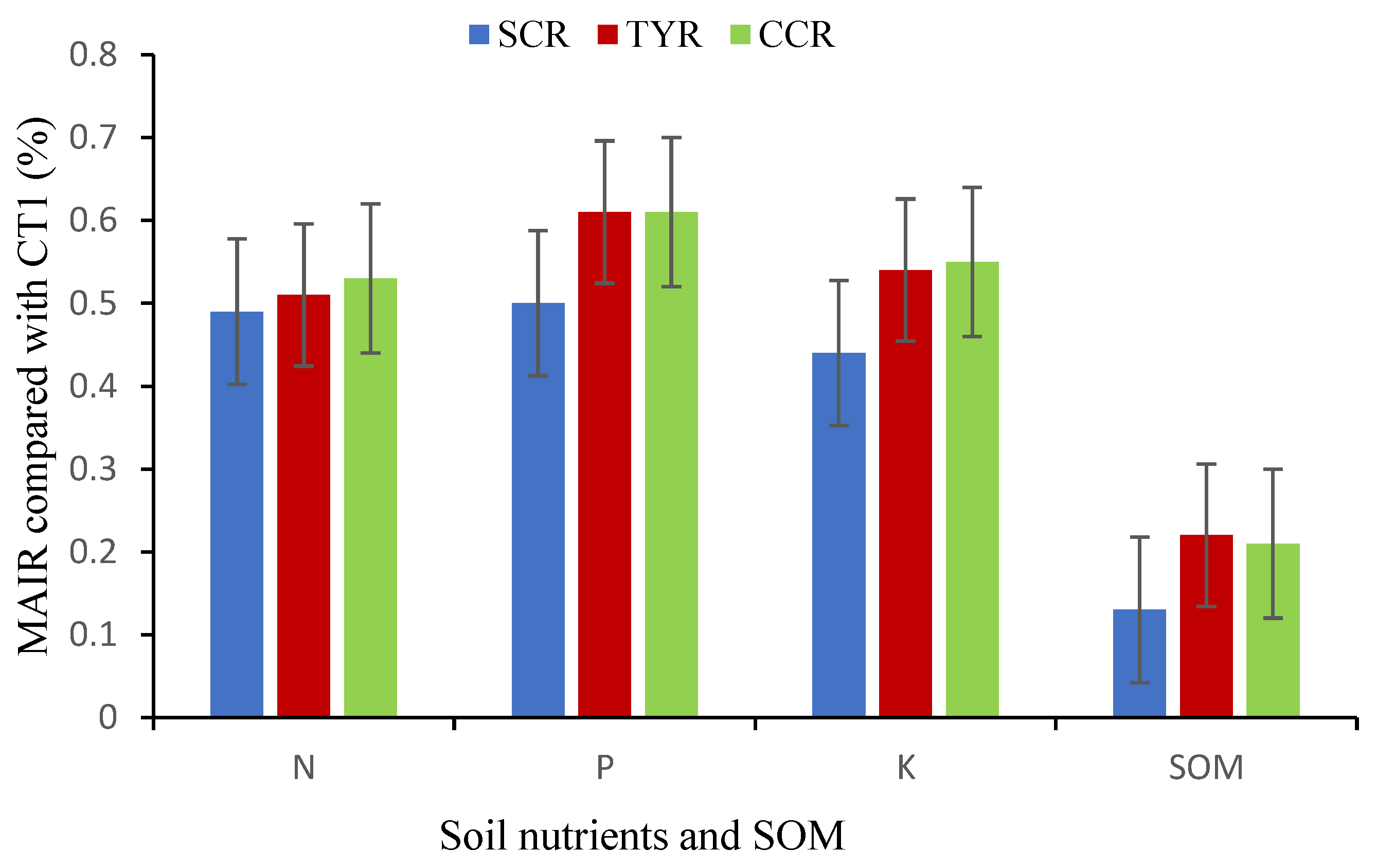
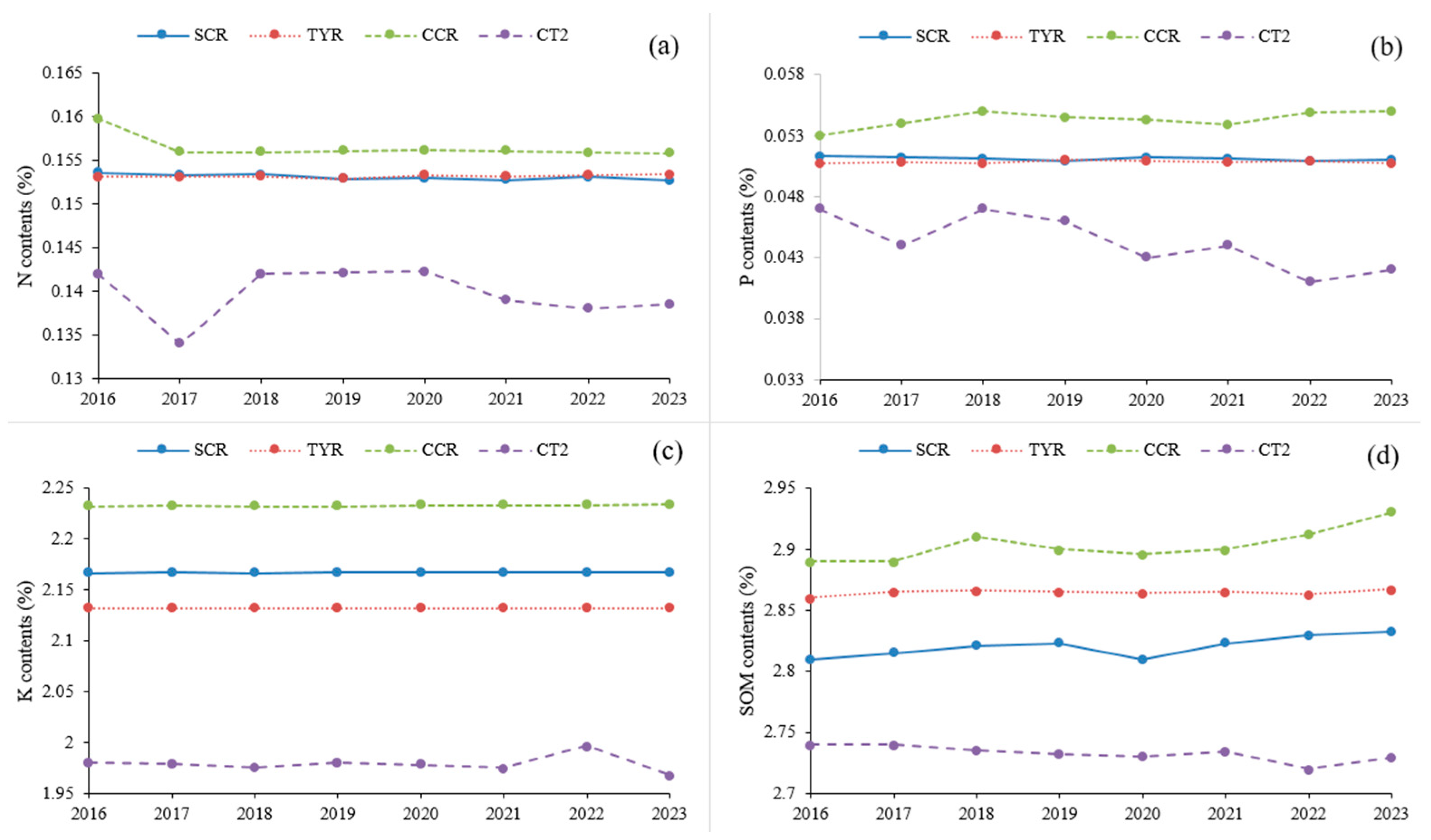



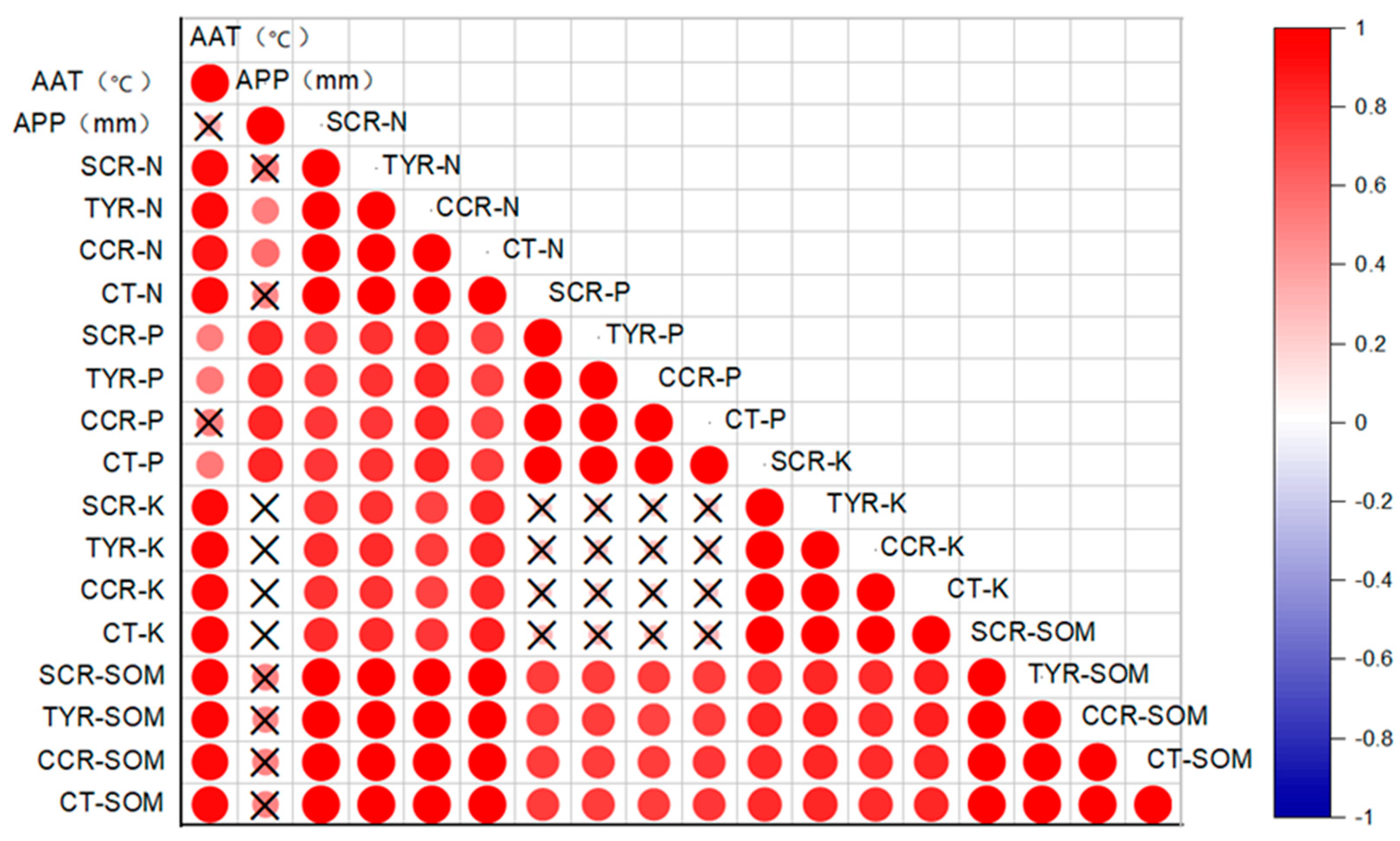
| Sum of Squares | Degree of Freedom | Mean Square | F | Significance | ||
|---|---|---|---|---|---|---|
| AAT | Between groups | 900,033.333 | 2 | 450,016.667 | 312.279 | 0.000 |
| Within groups | 30,262.500 | 21 | 1441.071 | |||
| Sum | 930,295.833 | 23 | ||||
| APP | Between groups | 61,185.333 | 2 | 30,592.667 | 30.747 | 0.000 |
| Within groups | 20,894.500 | 21 | 994.976 | |||
| Sum | 82,079.833 | 23 | ||||
Disclaimer/Publisher’s Note: The statements, opinions and data contained in all publications are solely those of the individual author(s) and contributor(s) and not of MDPI and/or the editor(s). MDPI and/or the editor(s) disclaim responsibility for any injury to people or property resulting from any ideas, methods, instructions or products referred to in the content. |
© 2024 by the authors. Licensee MDPI, Basel, Switzerland. This article is an open access article distributed under the terms and conditions of the Creative Commons Attribution (CC BY) license (https://creativecommons.org/licenses/by/4.0/).
Share and Cite
Wang, G.; Gao, X.; Fu, M.; Zhou, Z.; Song, K.; Li, J. Sustainable Corn Stubble Management Is Site Specific: A Study in Northeastern China. Sustainability 2024, 16, 6605. https://doi.org/10.3390/su16156605
Wang G, Gao X, Fu M, Zhou Z, Song K, Li J. Sustainable Corn Stubble Management Is Site Specific: A Study in Northeastern China. Sustainability. 2024; 16(15):6605. https://doi.org/10.3390/su16156605
Chicago/Turabian StyleWang, Gang, Xiaomei Gao, Minggang Fu, Zihao Zhou, Kexin Song, and Jie Li. 2024. "Sustainable Corn Stubble Management Is Site Specific: A Study in Northeastern China" Sustainability 16, no. 15: 6605. https://doi.org/10.3390/su16156605






